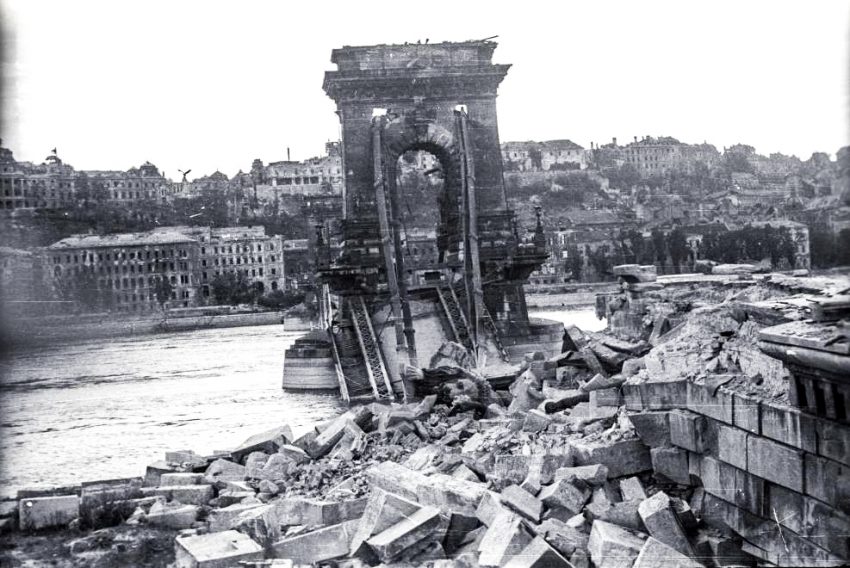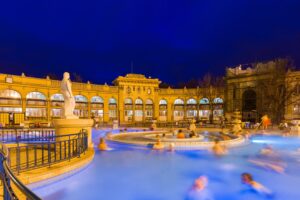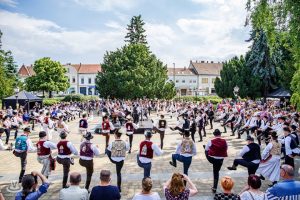1 September 2019 marks the 80th anniversary of the outbreak of World War II. On this occasion, we’ll take you through some of the most important Budapest locations of the 20th century’s most gruelling six years which saw the near-complete destruction of the Hungarian capital, and tens of thousands of civilians dead.
Hospital in the Rock
Found beneath the Royal Palace, the Hospital in the Rock is one of the most unique attractions in the city, created in the natural and man-made caverns of Castle Hill. Its construction started in 1939 as an emergency hospital and reinforced bomb shelter, in preparation for the Second World War. Designed to treat 70 patients by a staff of approximately 40 doctors at a time, at one point during the Siege of Budapest (which lasted from 29 December, 1944 till 13 February, 1945), it housed 600 wounded soldiers. It was one of the most advanced hospitals of its time in Europe, fitted with state of the art medical equipment and its own generators, allowing the X-ray machines to operate even when all the other hospitals in the city were left without electricity. The hospital was used once more during the 1956 revolution, then it got re-purposed as a nuclear bunker, complete with a 25 m3 water tank, and a ventilation and poison gas-filtering system, ensuring the survival of its occupants for 72 hours. Classified as a top secret structure until 2002, it was opened as an exhibition space in 2008, furnished with close to 200 realistic wax figures, original furniture and equipment, giving you a close and personal look at World War II and the 1956 revolution.

Shoes on the Danube Bank
One of the most poignant memorials of Hungary is to be found on the Pest embankment of the Danube, halfway between the Parliament and the Széchenyi Chain Bridge. Created by sculptor Gyula Pauer, based on the idea of his Turkish-Hungarian friend, the poet and film director Can Togay, Shoes on the Danube Bank is an installation honouring the 3,500 people (800 of them Jews), who were shot into the river by the militiamen of the fascist Arrow Cross party in 1944 and 1945. Erected in 2005 and made up of 60 pairs of period-appropriate bronze footwear, the work represents the thousands of shoes left behind the victims of the Arrow Cross terror. In 2017, the installation, which has become somewhat of a place of pilgrimage, was ranked among the world’s most fascinating public sculptures by Architectural Digest.

Mary Magdalene Church
One of the oldest churches in Budapest, Castle District’s Mary Magdalene is the most notable memento of the destruction the war and the subsequent Communist regime had laid upon the architecture of Budapest. Built in the 13th century, it was later expanded and refurbished in Gothic style. For the first few decades of Buda’s Ottoman occupation, it was the country’s only functioning Christian church, until it got turned into a mosque. In his 1935 short novel, titled Budapest Guide for Martians, Antal Szerb noted that “while the Westminster Abbey is indeed larger, one will not feel so small next to it”. Today, only the building’s impressive Gothic bell tower remains standing: after suffering severe damage during the Siege of Budapest, its nave – instead of being renovated – was destroyed in 1950 on the orders of Mátyás Rákosi, the leader of Hungary’s Communist Party. Besides serving as a memorial, it also doubles as a lookout tower, offering an extraordinary panoramic view over the city.

Bridges
By the time the city’s surrendered to the Allied forces on 13 February, 1945, all five bridges across the Danube were destroyed by the retreating German troops, who blew them to bits in order to halt the advance of the Soviet army. The first one to go was Margaret Bridge on 4 November, 1944 (blown up accidentally during rush hours, killing around 600 people, including 40 German sappers), while the last bridge to collapse into the icy river was Erzsébet híd on 18 January, 1945. It was also the last one to be rebuilt: the citizens of Budapest had to wait until 1964 till it was reopened to traffic, in a completely new, more slender, and less embellished form. The only bridge that escaped destruction was Árpád híd, which was at the time still under construction. Until August 20, 1946 (the opening ceremony of Szabadság híd), the city had to do with just one link between its two halves: Kossuth híd was built at breakneck speed in just 8 months, connecting Batthyány tér on the Buda side to Báthory utca on the Pest side. It was finally dismantled in 1960, with two plaques on both sides of the Danube being the only reminders of its existence.





